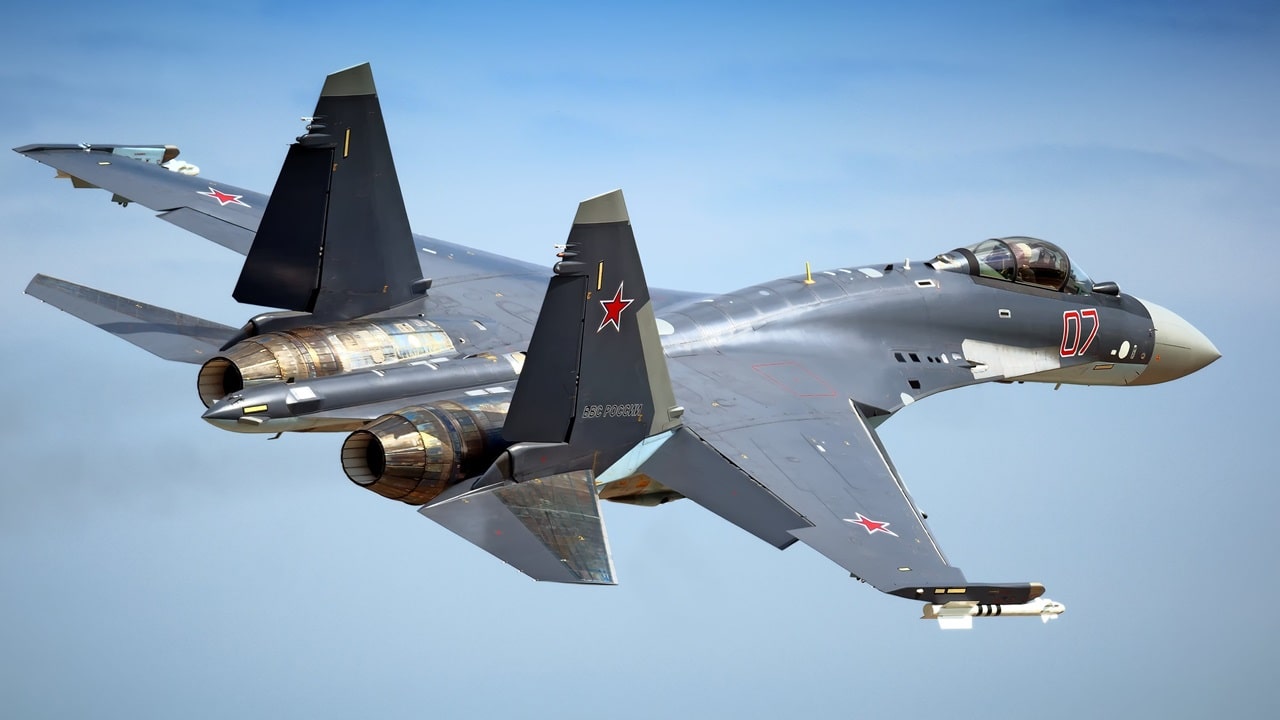NATO Is Freaked: Russia Is Getting New Su-57 and Su-35 Fighter Jets
Russia’s United Aircraft Corporation (UAC) has delivered new batches of Sukhoi Su-57 and Su-35S fighter jets to the Russian Aerospace Forces, aiming to boost its air power despite sanctions and production limitations.
What You Need to Know: Russia’s United Aircraft Corporation (UAC) has delivered new batches of Sukhoi Su-57 and Su-35S fighter jets to the Russian Aerospace Forces, aiming to boost its air power despite sanctions and production limitations.

-The Su-57, Russia's prized fifth-generation jet, is set to debut at China’s Airshow Zhuhai, although its arrival has sparked mixed reactions compared to China’s J-20 Mighty Dragon.
-The Kremlin struggles to replace fighters lost in Ukraine, with Su-35S models particularly vulnerable to Western-supplied air defenses. Although reluctant to send Su-57s into combat, Russia may eventually need to deploy these jets as losses continue to mount.
Russia Bolsters Air Fleet with New Su-57 & Su-35S Fighters Amid Ukraine Losses
Russia's United Aircraft Corporation (UAC), a subsidiary of the state-owned Rostec military-industrial conglomerate, announced on Monday that it has delivered a "batch" of Sukhoi Su-57 (NATO reporting name Felon) and Sukhoi Su-35S (NATO reporting name Flanker-M) fighter aircraft to the Russian Aerospace Forces.
The exact number of fighters in the new batches was not disclosed, but according to a report from Russian state media outlet Tass, the aircraft have successfully completed factory trials, and have been sent to a deployment airfield.
"UAC enterprises continue rhythmical operation to fulfill the commitments. Other batches of Su-57 fifth-generation and Su-35S multirole fighter jets of generation 4++ will be delivered by the end of the year. The aircraft are at various production and test stages," UAC CEO Vadim Badekha told Tass.
Due to Western-imposed sanctions, the Kremlin has struggled to produce its advanced aircraft in significant numbers. It has continued to find ways to source components, including through shell companies and via China, but it also continues to lose aircraft in its war in Ukraine faster than those fighters can be replaced.
Moreover, even before the latest sanctions were imposed in 2022, Russia had largely failed to reach serial production of the Su-57 and scaled back on forecasts of how many might be produced.

Hyping the Su-57 Fighter
Even as the production woes are likely to continue, the Kremlin has sought to put the spotlight on its "fifth-generation" fighter, which will take part in an aerial demonstration at this week's 15th China International Aviation and Aerospace Exhibition, begins on Tuesday outside the city of Zhuhai in the Guangdong province.
"Su-57 is the only fifth-generation fighter jet that has confirmed its breakthrough characteristics in all combat engagement options," Rostec CEO Sergey Chemezov also told Tass on Monday.
"The fighter jet is distinguished by a high survivability due [to] a low signature and modern onboard defense complex. The aircraft will continue to be upgraded according to combat engagement experience. Su-57 together with Su-34 and Su-35S are the wings of our victory. I am sure the debut of Su-57 export option in Zhuhai will be worthily assessed by foreign colleagues," the Rostec chief added.
This marks the Su-57's first appearance at the biennial China International Aviation and Aerospace Exhibition – also known as Airshow China. However, Chemezov didn't address the fact that the prototype Su-57 that arrived in China last week was quickly mocked on social media and compared unfavorably to the Chengdu J-20 Mighty Dragon, Beijing's own fifth-generation warbird. It certainly wasn't the type of attention that Rostec likely expected or wanted, as it seeks to find foreign buyers for the export model.

Russian Losses Mount
As previously reported, the Kremlin could desperately need every fighter it can getas it had lost upwards of a dozen Su-35S fighters in the first half of this year, and the losses have only continued to climb.
Despite being an air superiority fighter at heart, the Su-35S has largely failed to evade the sophisticated air-defense systems that have been provided to Ukraine from Western countries. It would seem almost futile to keep producing more. Still, for the Kremlin, the only alternative is to send the Su-57s into combat over the skies of Ukraine, and Moscow has so far shown reluctance to do so – possibly believing or accepting that it would meet a similar outcome.
Author Experience and Expertise: Peter Suciu
Peter Suciu is a Michigan-based writer. He has contributed to more than four dozen magazines, newspapers, and websites with over 3,200 published pieces over a twenty-year career in journalism. He regularly writes about military hardware, firearms history, cybersecurity, politics, and international affairs. Peter is also a Contributing Writer for Forbes and Clearance Jobs. You can follow him on Twitter: @PeterSuciu. You can email the author: [email protected].
Image Credit: Creative Commons and/or Shutterstock.
From the Vault


